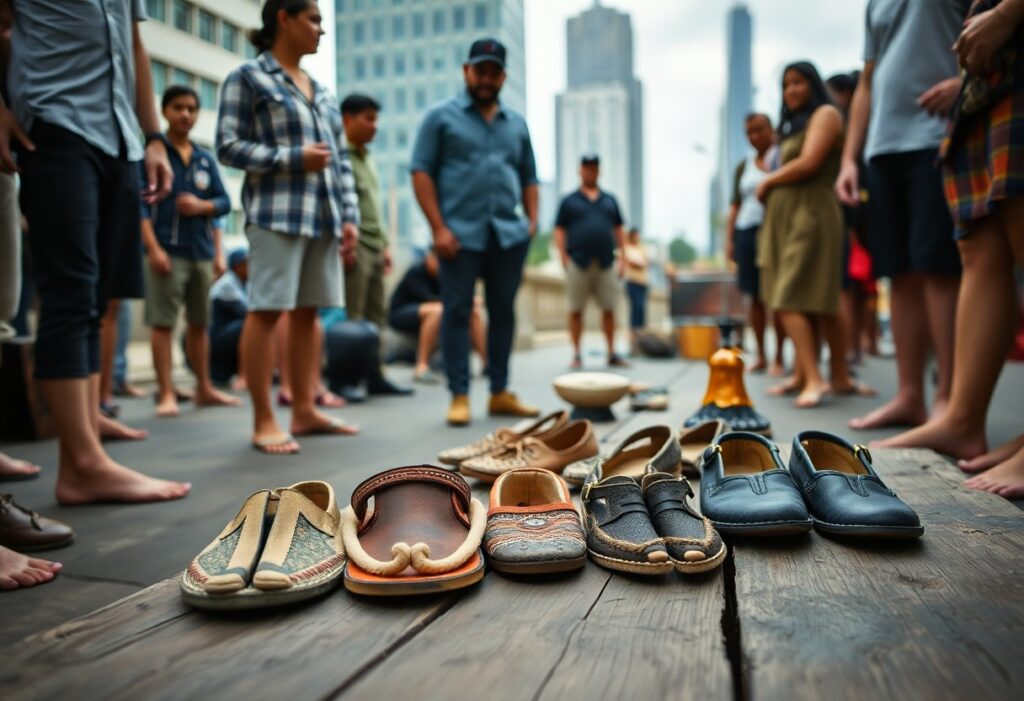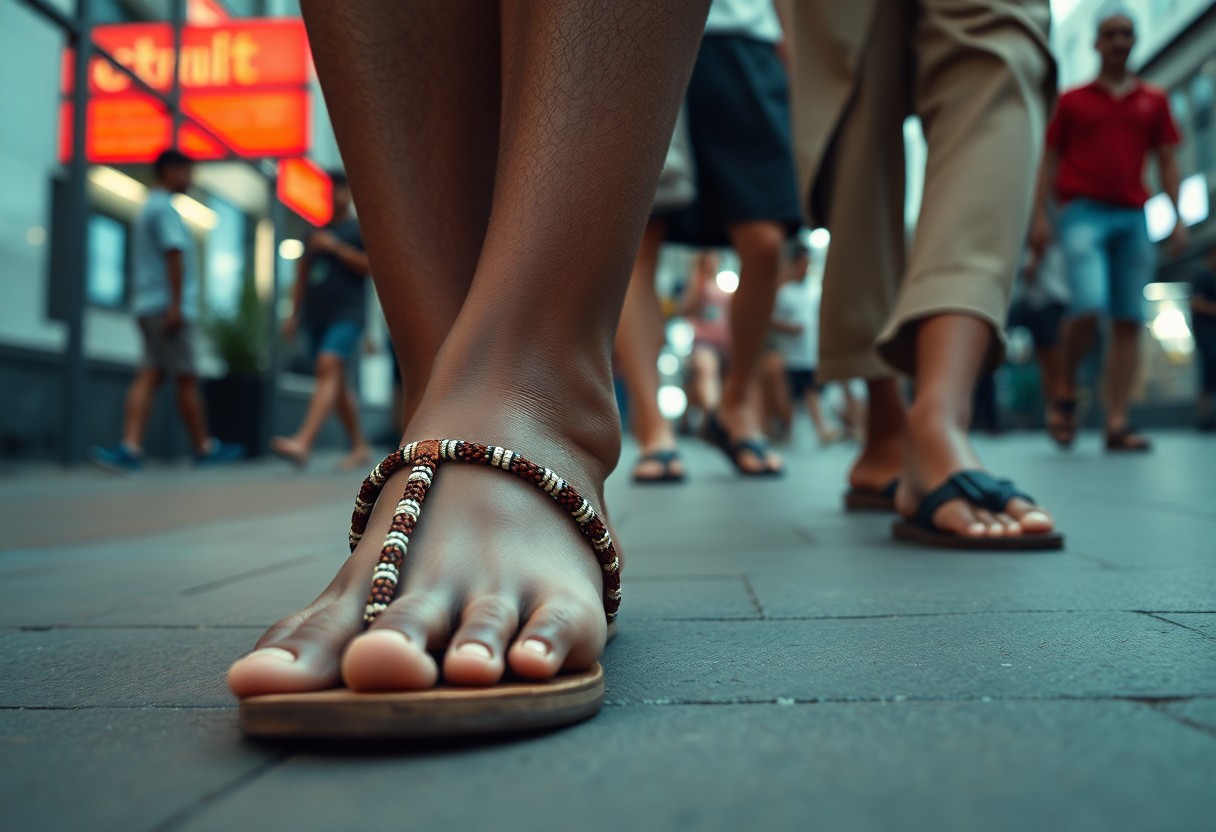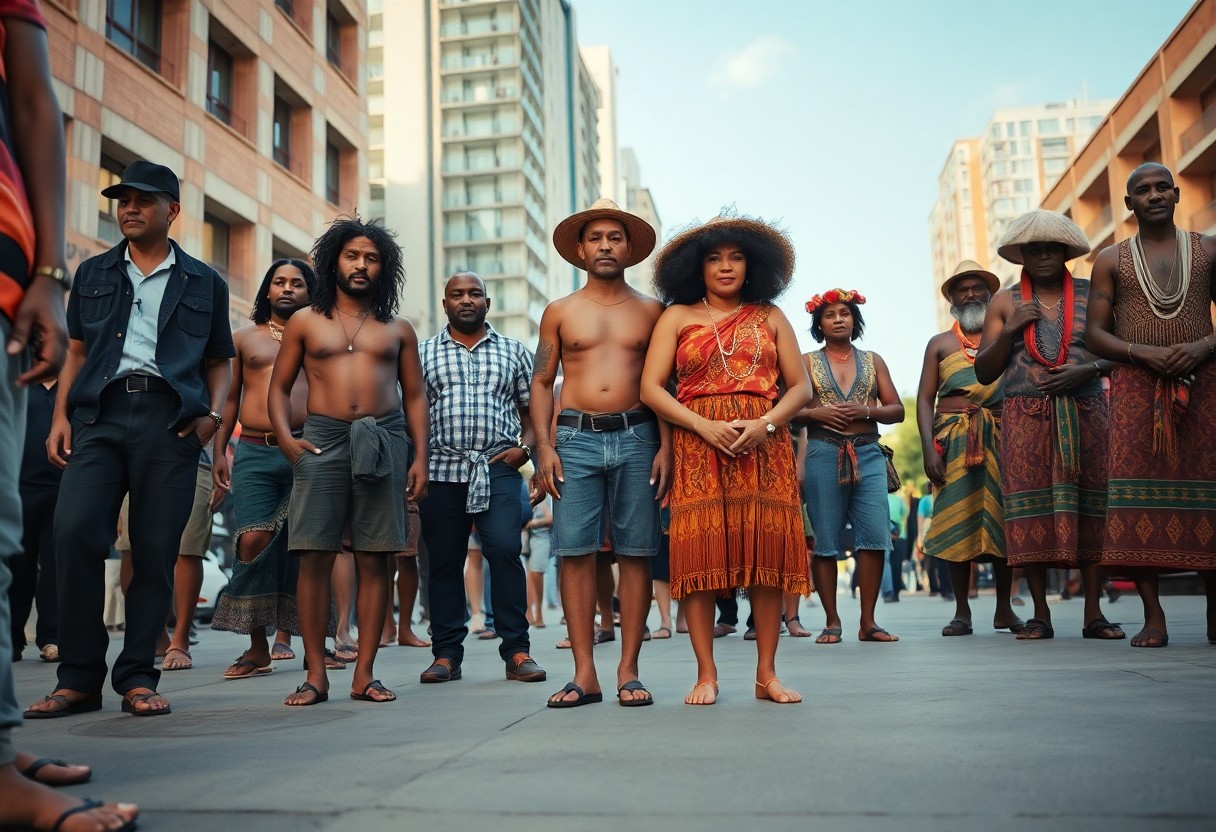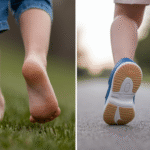
Diving into the realm of barefoot footwear through the perspective of cultural anthropology reveals fascinating stories that link the deep-rooted traditions of Aboriginal cultures to contemporary urban experiences. As you explore this captivating evolution, you will discover how cultural beliefs and practices surrounding minimalist footwear influence our perceptions of comfort, our connection to the earth beneath our feet, and the many ways we express our identities. Grasping these themes not only broadens your understanding but also encourages a re-evaluation of how the choice of footwear can reflect profound cultural significance and personal identity.

Unveiling the Connection Between Ancient Footwear Practices and Modern Innovations
The contemporary footwear market is a vibrant tapestry that intricately blends ancient traditions with cutting-edge innovations, nurturing a growing appreciation for barefoot footwear. This journey not only pays tribute to traditional indigenous techniques but also adapts them to seamlessly fit into your modern lifestyle. Recognising the significance of historical practices allows you to uncover an exciting fusion of cultural respect and practical aesthetics within your daily footwear selections, enriching your personal style while paying homage to the past.
Examining Indigenous Foot Conditioning Techniques Against Modern Practices
Indigenous cultures around the world have employed specific conditioning techniques to fortify their feet for navigating various terrains. Practices such as walking barefoot across diverse surfaces have strengthened the arches and muscles in ways that many modern interpretations often fail to replicate. Although you may come across minimalist footwear designed to mimic these effects, they seldom provide the authentic experience of genuine contact with the earth, which is essential for cultivating natural foot strength and flexibility.
Tracing the Evolution of Military Footwear: From Ancient Caligae to Modern Tactical Boots
The narrative of military footwear is an intriguing tale of adaptation and innovation, evolving from the robust Roman caligae, crafted for strength and traction, to today’s tactical boots that harmoniously blend protection with agility and comfort. An analysis of these transitions reveals a constant principle: in challenging environments, functionality takes precedence, demanding equipment that enhances endurance and mobility for soldiers.
The Roman caligae showcased a sophisticated understanding of military needs, composed of durable leather with an open-toe design for ventilation. This historic footwear featured thick soles that effectively absorbed shock and provided crucial traction, vital in combat situations. Fast forward to the present, and modern tactical boots are constructed with advanced materials such as Kevlar and waterproof membranes to enhance durability and performance. These contemporary designs incorporate padded collars and state-of-the-art cushioning systems to reduce the risk of injuries during demanding military operations. By recognising the roots of military footwear, you can appreciate how these historical styles have paved the way for today’s innovations, marrying heritage, practicality, and cutting-edge technology to satisfy the needs of today’s combatants.

Analysing the Disparities in Footwear Choices Between Urban and Rural Environments
The variations in footwear preferences between urban and rural settings expose significant cultural and practical distinctions. Urban environments frequently prioritise style and brand identity, whereas rural areas often focus on practicality and durability. As barefoot footwear gains traction, urban dwellers increasingly adopt its minimalist design as both a fashion statement and a means to access perceived health benefits. Conversely, individuals residing in rural locales may remain sceptical, shaped by traditional norms and the practical demands of their surroundings.
Identifying Emerging Trends in Urban Adoption of Barefoot Footwear
In metropolitan regions, a noticeable shift towards embracing barefoot footwear is taking place, with adoption rates steadily increasing over the last decade. This trend is fuelled by several factors, including a rising awareness of health, a growing interest in natural movement, and the influence of fitness trends such as yoga and running. Surveys indicate that approximately 35% of urban residents have actively sought out barefoot-style shoes, signifying a cultural shift towards embracing innovative body mechanics.
Investigating Gender-Based Barriers to Adoption: Who is Paving the Way?
Gender dynamics play a crucial role in the acceptance of barefoot footwear, with differing motivations influencing the choices of men and women. Women often face greater societal expectations related to fashion and aesthetics, which may hinder their willingness to adopt minimalist styles. In contrast, men may be more influenced by the performance and health benefits of these shoes, leading to higher adoption rates among male demographics.
A deeper exploration of the gendered aspects of barefoot footwear adoption reveals that societal expectations significantly impact women’s choices. Women frequently navigate a landscape where ideals of beauty and fashion overshadow practical health benefits. For instance, studies indicate that approximately 45% of men in urban areas are inclined towards barefoot shoes, compared to only 30% of women. Female consumers often grapple with the balance between form and function, making them more cautious as they assess the aesthetics of barefoot footwear against their need for comfort and support. By empowering women through targeted awareness campaigns and showcasing fashionable barefoot options, the willingness to embrace this trend could increase, potentially reshaping urban footwear narratives and fostering inclusivity across genders.

Exploring Innovative Developments That Are Shaping the Future of Barefoot Footwear
As the demand for barefoot footwear continues to grow, groundbreaking technologies are set to revolutionise your approach to comfort and performance. Advances in materials science and personalised fitting techniques will not only enhance functionality but also customise your walking experience, merging traditional wisdom with modern design principles. You find yourself entering a new era where your footwear can be as unique as the journey it supports, leading to an unparalleled level of comfort and performance.
Transforming Fit Through 3D Scanning: Achieving the Ideal Fit
The emergence of 3D scanning technology is transforming the landscape of barefoot footwear customization, facilitating a precise fit that conforms to your individual foot shape. Rather than opting for standard sizes, your shoes can be meticulously crafted to match the contours of your feet, significantly enhancing comfort and reducing the likelihood of injury. Custom-fit options will not only elevate your walking experience but also make barefoot shoes more accessible to individuals with varied foot shapes and sizes.
Integrating Smart Sensors into Footwear: The Next Frontier of Footwear Technology
The integration of smart sensors into barefoot footwear is poised to reshape the industry by embedding technology directly into the soles. These innovative features can track various metrics, from distance covered to foot pressure, providing you with invaluable insights to optimise your walking or running habits. Equipped with real-time data, you can fine-tune your activities to boost performance and ensure safety.
Envision having access to real-time analytics while you walk or run. Smart sensors can monitor your gait, alerting you to any irregularities that may lead to injury. Some forward-thinking brands are already designing footwear capable of assessing your foot's impact across different terrains, offering personalised suggestions for style or cushioning adjustments on the fly. This pioneering integration merges smart technology with the traditional barefoot philosophy, ensuring that you maintain a natural stride while harnessing the latest advancements in wearable tech. The opportunities for improving sports performance, rehabilitation, and everyday comfort are boundless, fundamentally transforming the way you interact with your environment with each step.
Reflecting on the Evolution of Barefoot Footwear
Your journey through the cultural anthropology of barefoot footwear reveals a rich narrative intricately woven from the threads of Aboriginal traditions to modern urban practices. By embracing the tenets of natural movement and a connection to the earth, you gain profound insights into how this footwear philosophy transcends mere fashion, significantly influencing lifestyle choices and community values. As you contemplate these varied perspectives, consider how your footwear choices can embody and promote a deeper appreciation of cultural heritage and adaptability in today’s evolving landscape.
The Article Cultural Anthropology of Barefoot Footwear: From Aboriginal Traditions to Modern Urban Adoption appeared first on My Shoes Finder
The Article Cultural Anthropology of Barefoot Footwear: Traditions to Today Was Found On https://limitsofstrategy.com







